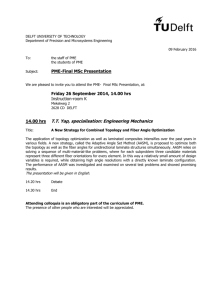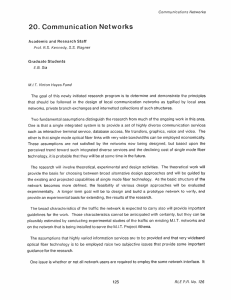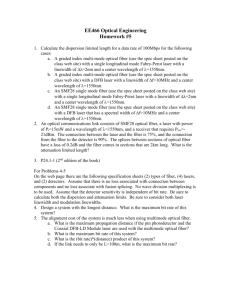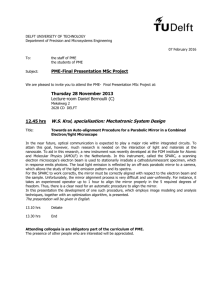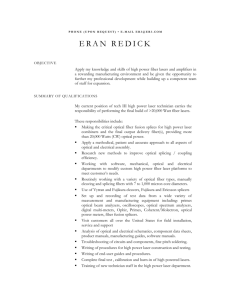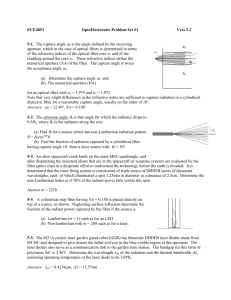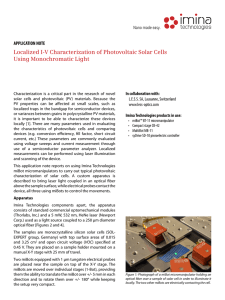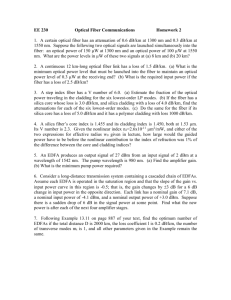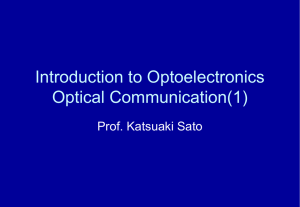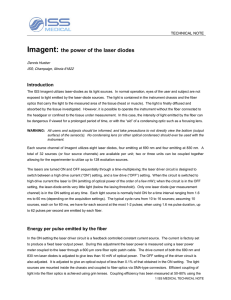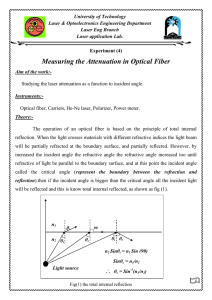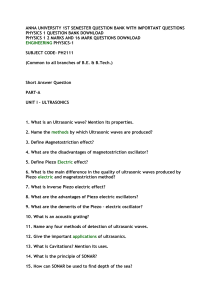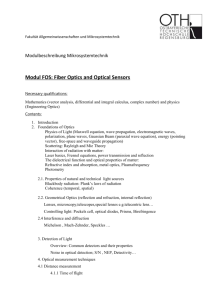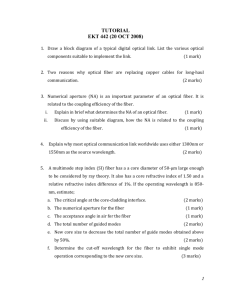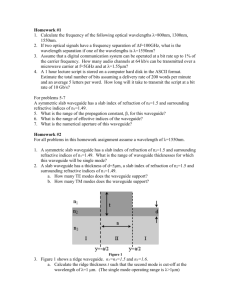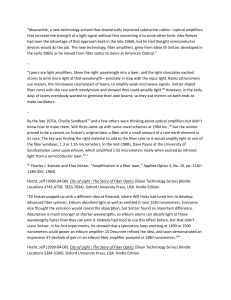14-08-28_-_Zondervan_
advertisement
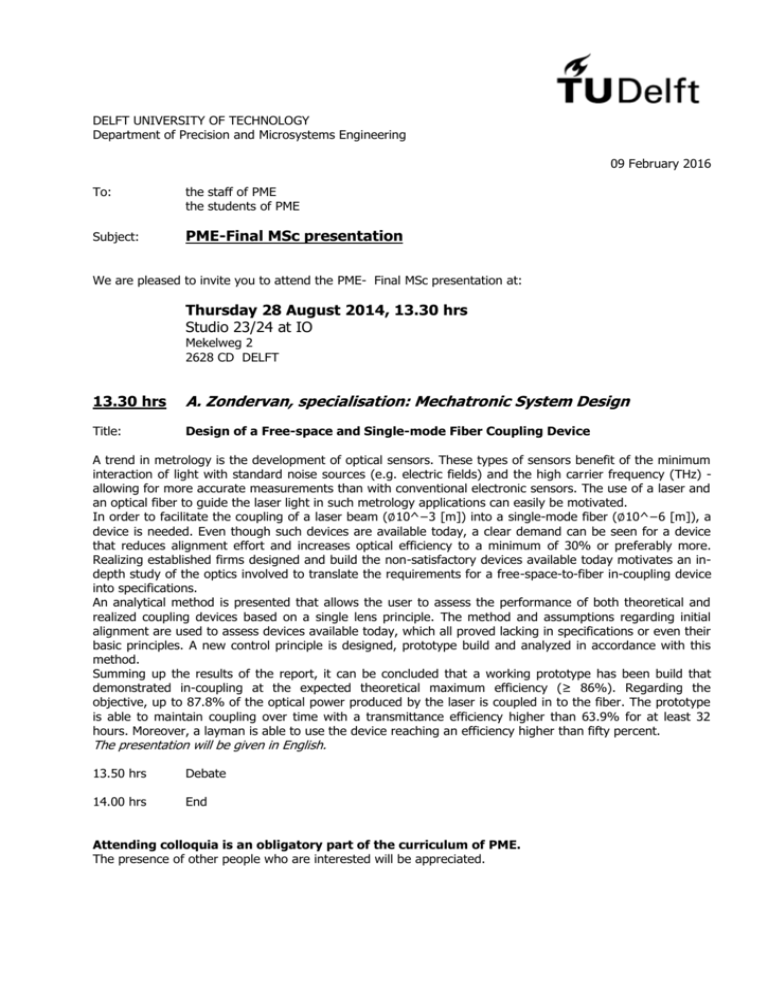
DELFT UNIVERSITY OF TECHNOLOGY Department of Precision and Microsystems Engineering 09 February 2016 To: the staff of PME the students of PME Subject: PME-Final MSc presentation We are pleased to invite you to attend the PME- Final MSc presentation at: Thursday 28 August 2014, 13.30 hrs Studio 23/24 at IO Mekelweg 2 2628 CD DELFT 13.30 hrs A. Zondervan, specialisation: Mechatronic System Design Title: Design of a Free-space and Single-mode Fiber Coupling Device A trend in metrology is the development of optical sensors. These types of sensors benefit of the minimum interaction of light with standard noise sources (e.g. electric fields) and the high carrier frequency (THz) allowing for more accurate measurements than with conventional electronic sensors. The use of a laser and an optical fiber to guide the laser light in such metrology applications can easily be motivated. In order to facilitate the coupling of a laser beam (∅10^−3 [m]) into a single-mode fiber (∅10^−6 [m]), a device is needed. Even though such devices are available today, a clear demand can be seen for a device that reduces alignment effort and increases optical efficiency to a minimum of 30% or preferably more. Realizing established firms designed and build the non-satisfactory devices available today motivates an indepth study of the optics involved to translate the requirements for a free-space-to-fiber in-coupling device into specifications. An analytical method is presented that allows the user to assess the performance of both theoretical and realized coupling devices based on a single lens principle. The method and assumptions regarding initial alignment are used to assess devices available today, which all proved lacking in specifications or even their basic principles. A new control principle is designed, prototype build and analyzed in accordance with this method. Summing up the results of the report, it can be concluded that a working prototype has been build that demonstrated in-coupling at the expected theoretical maximum efficiency (≥ 86%). Regarding the objective, up to 87.8% of the optical power produced by the laser is coupled in to the fiber. The prototype is able to maintain coupling over time with a transmittance efficiency higher than 63.9% for at least 32 hours. Moreover, a layman is able to use the device reaching an efficiency higher than fifty percent. The presentation will be given in English. 13.50 hrs Debate 14.00 hrs End Attending colloquia is an obligatory part of the curriculum of PME. The presence of other people who are interested will be appreciated.
